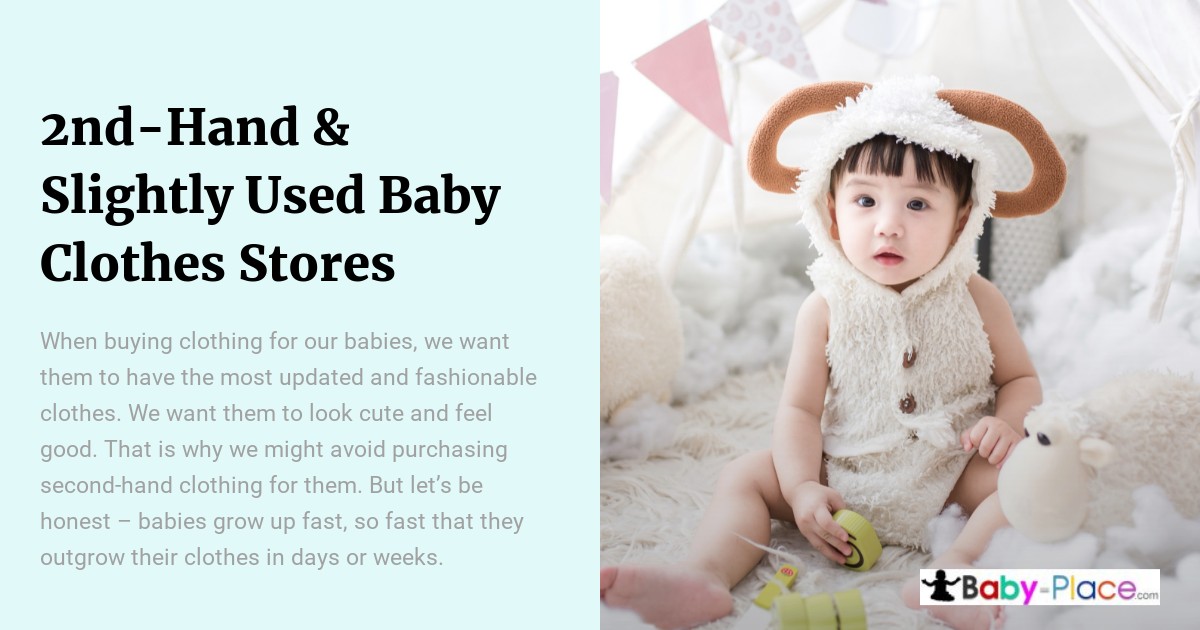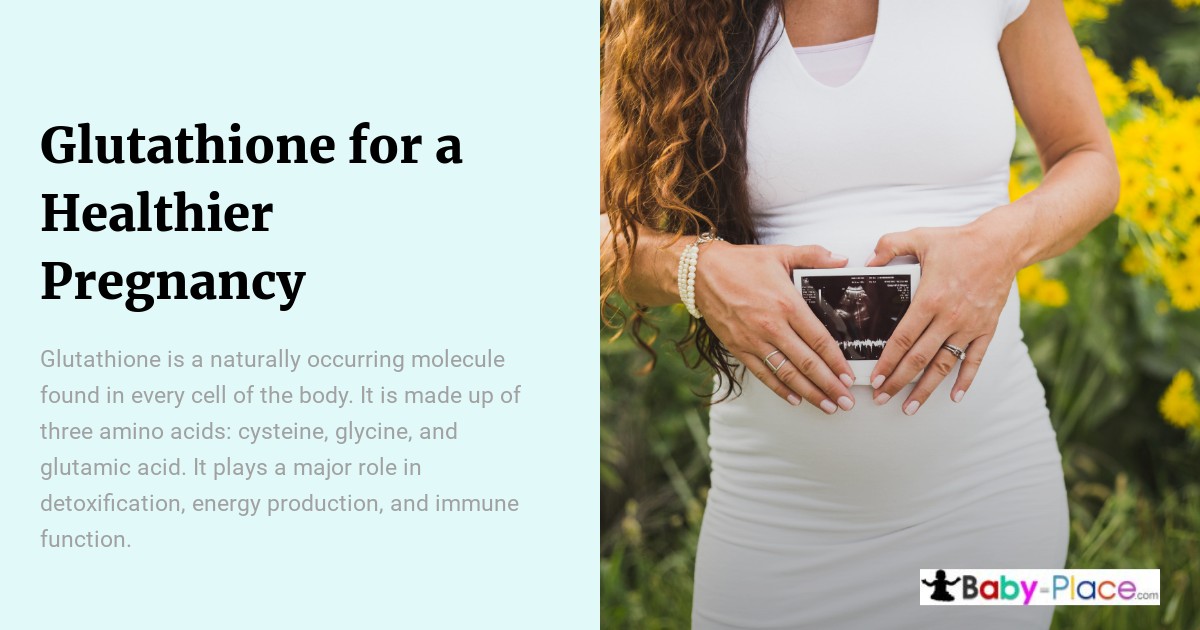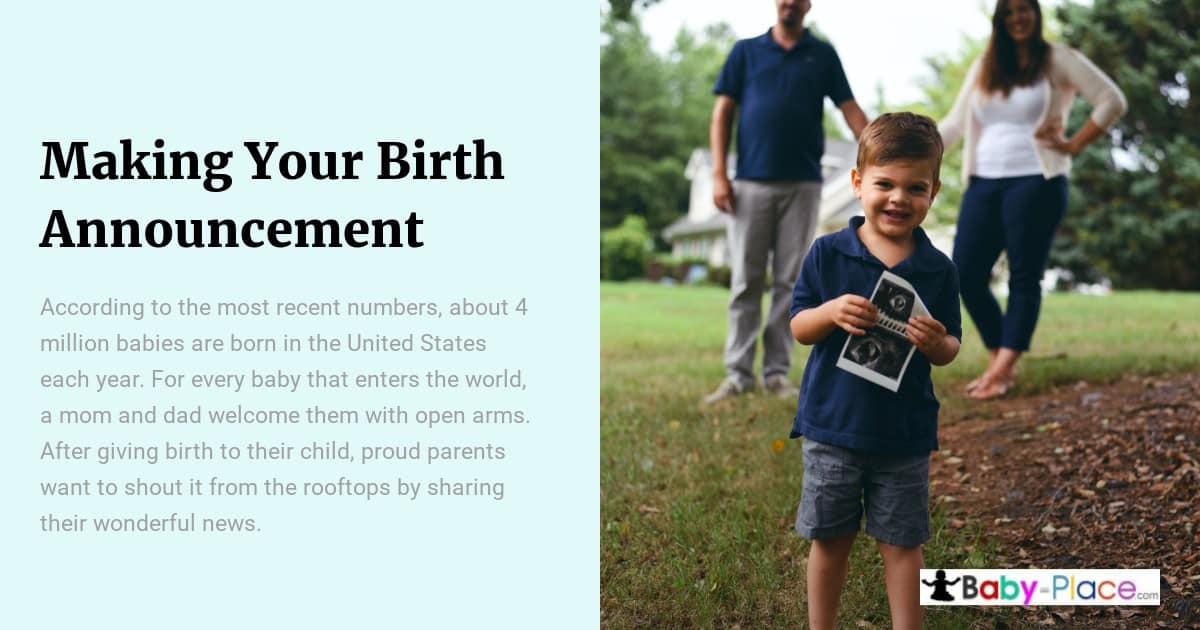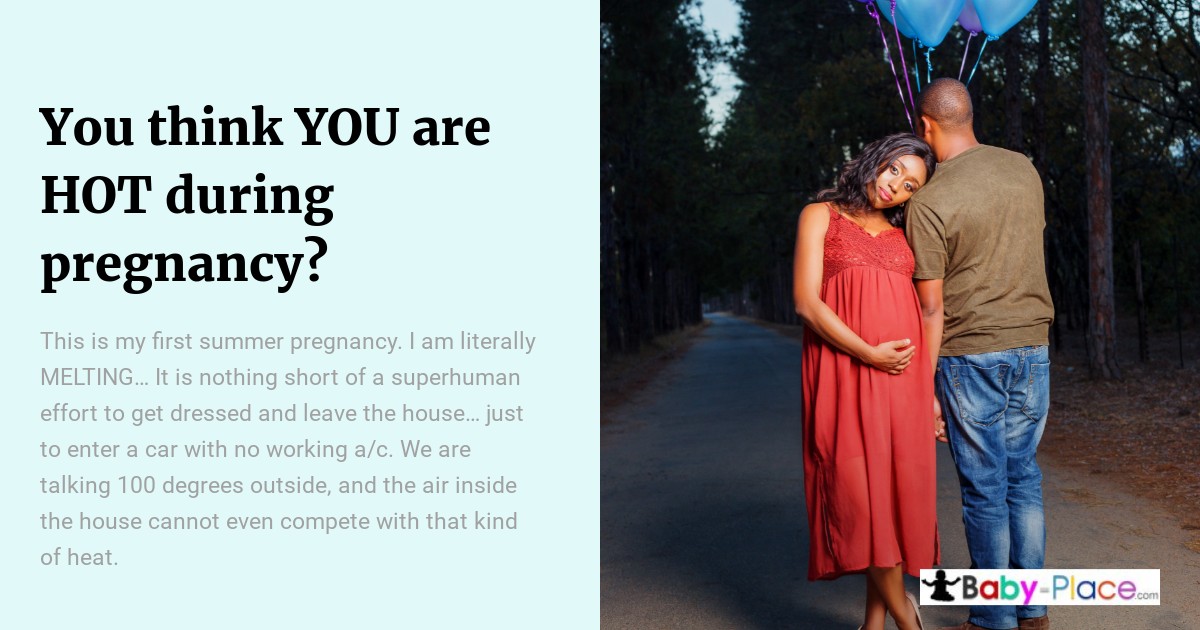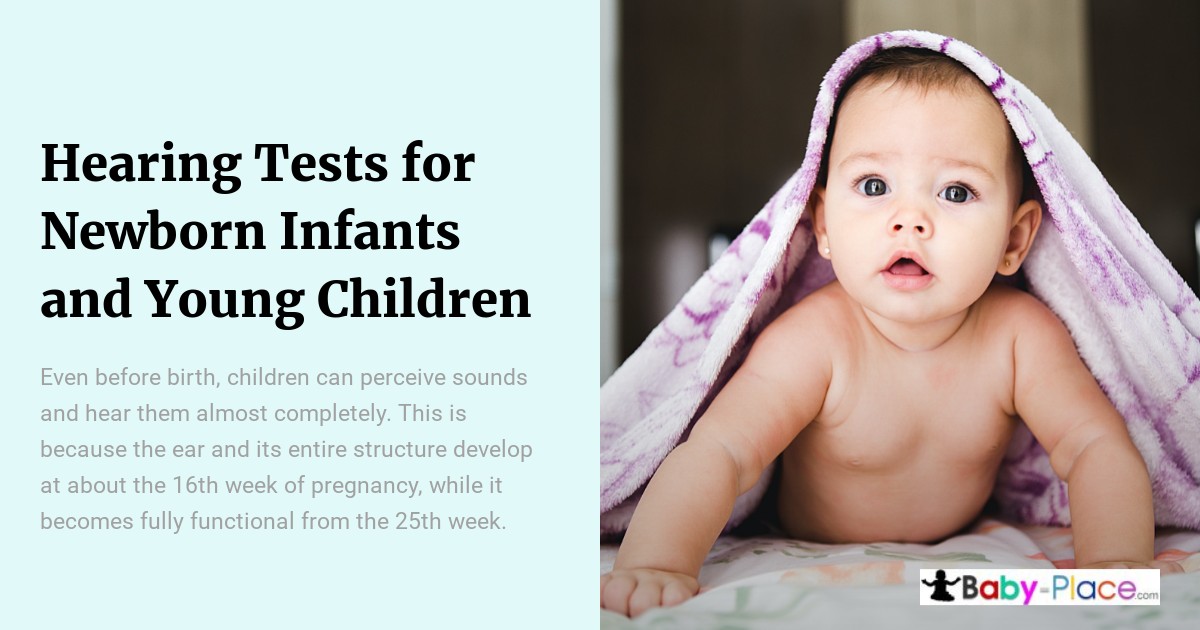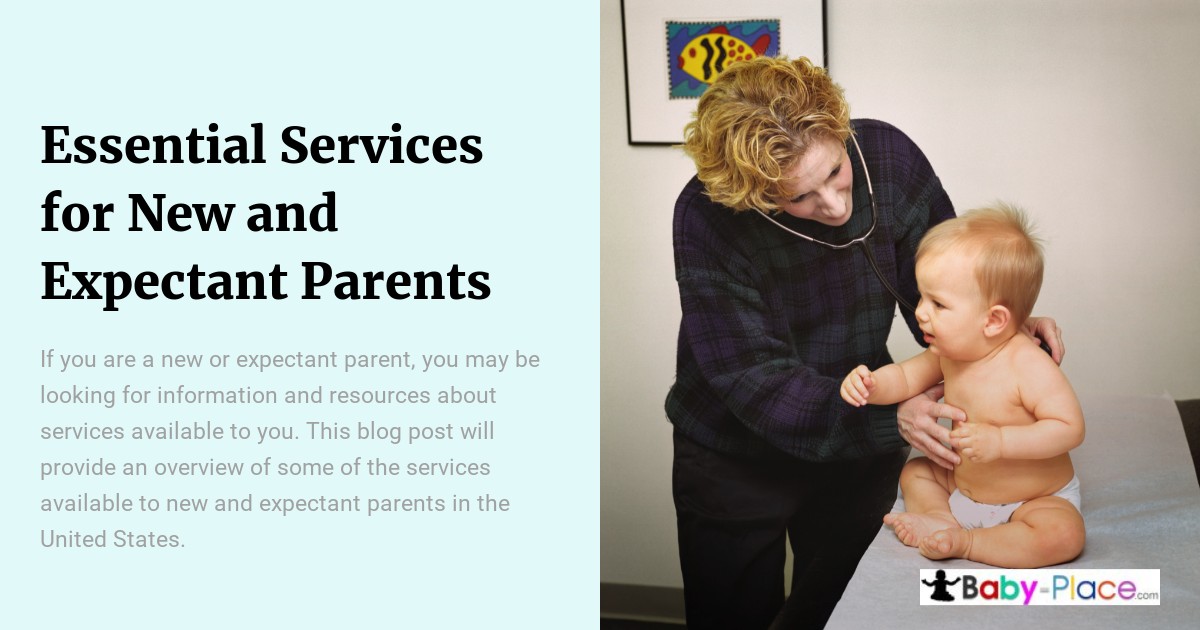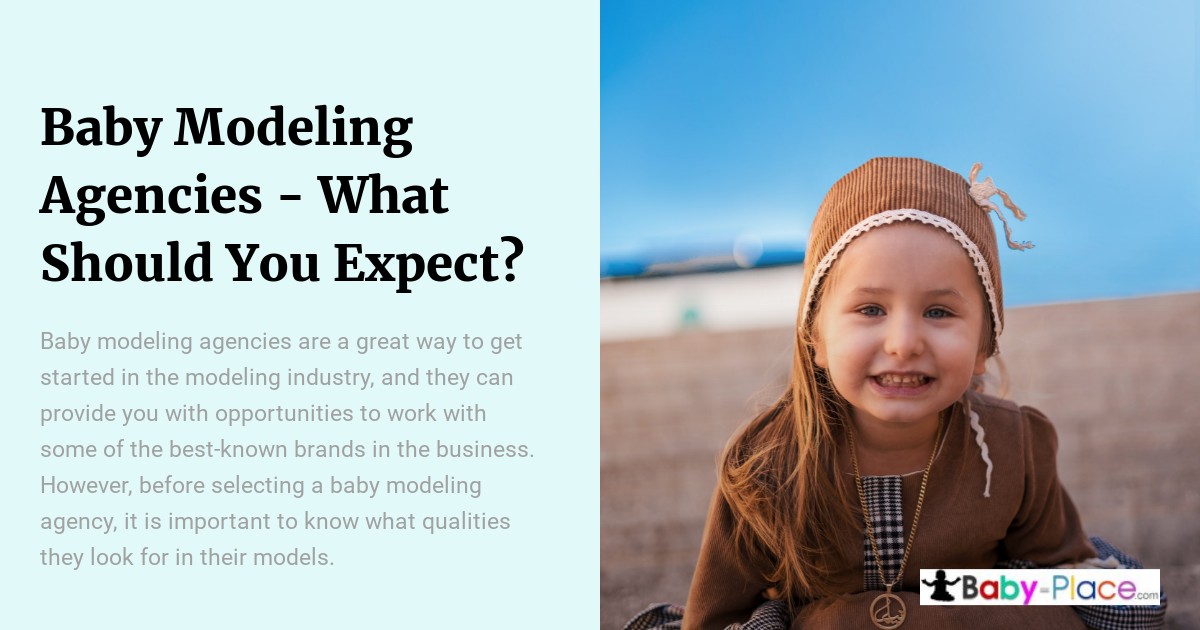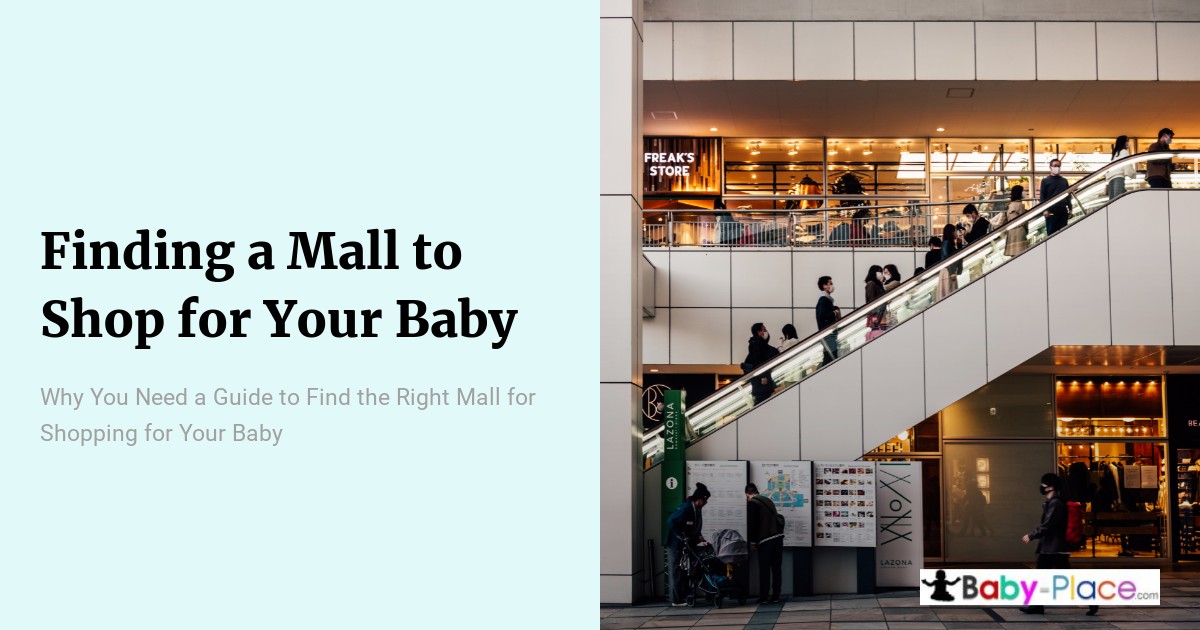My teenagers wouldn’t be seen dead in second-hand clothes. It didn’t help that we once bought a slightly used suit for my husband, and there was a name inside and a round hole on the pocket. After a bit of Googling, it turned out that he had died a few months before in a gunfight. That was weird!
But babies?
They really couldn’t care. They just want to be warm and comfortable. Don’t tell them anything is second-hand, and you will be fine!
Second hand-clothing for babies
We want our babies to have the most updated and fashionable clothes. We want them to look cute and feel good. That is why we might avoid purchasing second-hand clothing for them.
But let’s be honest.
Babies grow up so fast that they outgrow their clothes in days or weeks. It’s fine when you receive new clothes as presents, but is it worth spending your own money when you could use that on a bottle of bordeau? Trust me, you’ll prefer the wine after a few nights of your husband rolling over while the baby is screaming.
There are some things that most people are okay with buying second-handed. Take books as an example – they have already been read and are desperate to be adopted for a second life.
But it’s not the same with clothes. For some reason, people believe that dressing your baby with items already worn is tasteless. But why?
There’s no shame in reusing clothes, especially on a low budget, and especially if nobody knows apart from you.
Here are some reasons to consider buying worn clothing for your kids, whether online or in person.
#1 Brand-new clothing is expensive
Let’s not pretend. If you are trying to buy new clothes that have not been manufactured using slave labor in a distant country, you will pay a pretty penny for it. So, right now, stop what you are doing and decide if you care more about your wallet or your morals.
We’ve all been to a store and fallen in love with jeans or a dress, only to find out the price is outrageous. Maybe we gave in to our desires and bought the item convincing ourselves that it would last for years.
Then what happens?
You gain 30 lbs, and the clothing looks wrong on you.
Or you walk through the downtown of any major American city and see a homeless person wearing the same outfit.
Or, possibly, when we are not covered with vomit and pee, we wake up caring about fashion. Ironically, this is not such a problem. Some things can age so badly that you can wear them the next time they come into fashion.
We’ve all been there 🙁
Now, the same doesn’t apply to babies. They outgrow their clothing in a few weeks.
Can you imagine purchasing new high-price items every month?
Sure, our baby will look cute and fashionable in their new clothes, but at what cost?
Saving money is probably the most important reason people buy second-hand baby clothes. Once you’ve saved some money, why don’t you treat yourself and your kid to delicious food or a new toy?
You can also spend your savings on a nanny or other baby needs, like a pacifier. Whatever you decide to do with the money, be proud! You earned it.
#2 The fast fashion industry is bad news
Even if you have plenty of money and saving is not in your plans, consider the planet’s situation and where fast fashion leads us.
(If you don’t care about the planet or are just not in the mood for feeling guilty, then skip this section and the next, as it’s on the serious side. There is a fun fact just below, though)
The fashion industry produces up to 10% of all carbon emissions and contaminates the oceans with plastic and other materials. In addition, it is the second biggest consumer of our world’s water supply. If that wasn’t enough to put you off, remember the large amounts of used textiles and apparel ending up in landfills.
Fun Fact: Condoms comprise over 3% of all latex waste. But then again, if you knew about condoms, you would probably not be on a baby website.
We don’t want to make anyone feel guilty about buying clothes as it’s a basic human need.
But we should be aware of the consequences of some actions to reduce how frequently we give in to them. Purchasing fast fashion is one of the worst things that we can do. But nowhere near as bad as stepping on ants.
#3 We should avoid capitalism and hyperconsumption
Climate experts advise us to reduce gas emissions and gasoline use, save water, and so on. As individuals, we don’t have many options to help save the planet. Large industries and businesses are responsible for most gas emissions, and they should be the ones taking action.
However, we can always do our bit.
Firstly, cut down on beans and other fibrous foods.
But there is more you can do…
If you are concerned about climate change and its effects, buying second-hand clothing for your baby and yourself can make a difference. Imagine that most people began reusing clothes and other items. It would have an impact.
Hyperproduction exists because we overconsume! Some things are essential, like food and hygiene products and cabernet sauvignon.
But do we need everything we purchase? Did you use all of those essential gadgets you bought from Ikea, or are they still sitting in the bag by the door?
Are we contributing, deliberately or not, to hyperproduction and capitalism? The answer is probably yes.
#4 You can sell or donate your baby clothes!
Just like purchasing worn clothing for your kid, you can sell what you don’t need anymore or donate it to a non-profit organization.
Wash it first, though, because there is nothing as offputting as receiving clothes with mysterious stains. Or bedsheets. Or virtually anything else.
People love gifting cute clothes to newborns. If you’ve ever been to a baby shower, you are familiar with this phenomenon. If you have hosted a baby shower, you probably ended up with pajamas and dress suits for your child. They looked spectacular in them! Until they no longer fit. And then you need to choose between having another baby or giving the clothes away.
Now, some people like keeping cute clothes as a memory. I am guilty of this – I look at the pieces of clothing I wore at three years old and ask myself: how did I fit into that?
Okay…that’s not true. As soon as I left home, my Mom cleared out EVERYTHING from my room so that they could rent it out. I am NOT AT ALL bitter about this.
Storing clothing that warms your heart is more than okay. However, if you plan on throwing the items away, remember that someone out there can use them well. Also, you can gain some extra bucks or feel good if you donate them.
#5 Help local businesses and focus on the local economy
A significant amount of establishments have closed over the last few years. Some due to the economic situation and others due to the covid-19 pandemic. Others still, just bad management or laziness.
I’m sure you’ve heard that we must help local businesses.
The same goes for apparel shops. Second-hand clothing stores rely on the local economy and neighbors to thrive. It’s easy to go online and buy beautiful items of clothing that come to your door the next day. It’s also easy to visit multinationals and purchase the latest trends. It’s so common nowadays that many local establishments go broke.
In times of economic downturn, you can warm the cockles of your heart by helping local businesses survive.
#6 Teach positive values to your kid
You can teach positive and ecological values to your children indirectly. If you buy second-hand clothing regularly, you probably agree with some of the abovementioned points and arguments.
That probably means you will align your child’s education with those values. The world needs more people willing to make a change and live by environmentally friendly rules.
Pass on your positive traits to the next generation, crediting the theory of survival of the fittest.
#7 Play around and get creative!
One of the best things about fashion is that it allows us to express ourselves, get creative, and show others who we are. But this task can be more challenging when buying second-hand clothing.
Used apparel doesn’t commonly follow trends or dress codes. Sometimes it’s even vintage and retro. While some people love vintage clothing, it can be frustrating if you don’t.
If you are a fashion enthusiast, you can get creative, search for different items, and combine them in the perfect outfit for your baby.
Did you ever want to be a personal shopper and fashion designer? That’s kind of what we do when we dress our kids. Just without being paid. And having to cart around a pram.
Also, what about originality?
It’s easy to spot people wearing the same outfits in the streets. However, if you purchase your kid’s clothes at a second-hand store, you can ensure that no other child will wear them the same as yours. Also, extremely relevant when attending the Oscars, and wearing the same outfit as someone else is a no-no in Hollywood, especially if they look better than you.
Tips and safety considerations for Used Baby Clothes
Of course, there may be massive upsides to buying second-hand clothing. Anyone who says otherwise has likely never been poor but has grown up with a silver rattle in their mouth.
Here are some tips and considerations when purchasing:
Wash everything you buy
Often mothers wash all apparel items, even new ones, because chemical residue from the production process can be present. That said, it’s only logical to wash every second-handed piece of clothing, no matter how clean it looks. You can never know how and when someone cleaned it for the last time.
If you are in doubt, then look at the sweaty pits of the lady above.
On the other hand, if you are a very dirty person, it may be better not to wash them as the influence of your old and grimey clothes could have a negative effect.
To stay on the safe side for babies, choose a non-bio detergent for sensitive skin. For older children, it’s also a good idea to use your regular detergent in case they’re allergic to something else. For your husband, just put it at the top of his pile of clothes. Men just take the first item to hand and don’t notice much.
Check the clothing carefully.
Before buying something, make sure it’s in good shape. If you’re shopping in charity shops or have the opportunity to see the clothes in person, this is easier.
Look for symptoms of wear, including fading, piling, worn seams, and loose buttons, and, if possible, check it in a bright light for stains, which may not always be visible at first glance.
Buying online can be a little more challenging as you don’t get to feel and examine the item.
Don’t be afraid to message the seller with any queries about the item’s condition – you don’t want to receive products that are not worth the money you paid.
Warning: All sellers online lie. Even for a $3.25 item. They know you won’t leave a bad review as it will show the world that you buy second-hand clothes for your beloved baby. They also know you won’t try to return it at that price. When was the last time you returned your Macdonald’s meal because it tasted of rubber? Exactly.
Don’t pay more than it’s worth.
Now, it’s uncommon to spend more money than it initially costs for a second-hand piece of clothing. However, anything is possible. Do a search on Google for “old Pokemon card,” and you will see what I mean.
It’s crucial not to get carried away when shopping and pay more than an item is worth, especially on sites where bidding wars may quickly become a problem. Storage Wars is a TV Reality show. It is not a real reality, though. It is a fake reality. When you bid on an item online, it is a real reality and will cost you money.
When you locate something you like, consider its value first – how much would it have cost new? Is it damaged or looks pristine?
Set a price limit, and don’t go over it.
When you’re trying to save money, the last thing you want to do is overspend on something that isn’t worth it. Do you want to be like a divorcee thinking about her wedding day and wishing she had used that money to buy something she still wants?
Take care of vintage clothing.
One great advantage of buying second-hand clothes is that you already know how they will perform in the future. Forget that uncertainty of not knowing if an item will age with or without wrinkles. The vintage item has already shown its worst or best face over the years.
WARNING: Like the stock market, previous performance does not guarantee future performance. I was an AMAZING dancer when I used to drink. Now not so much.
Some extra care cannot harm. It is advisable to machine wash and avoid using the dryer. Look at the labels. Old polyester, for example, withstands a lot of washing. Today’s white shirts get yellow and lose their quality. The old ones, made to be worn often, are much more resistant in all senses of the word.
Yes, second-hand clothes can last longer than the current ones. So it is important to take care of their materials, especially if you intend to donate or resell them when they no longer fit your baby.
Don’t buy 20 pieces of clothing at once
Used clothing being cheaper or a bargain doesn’t mean you should go wild. As already mentioned, babies outgrow their clothes quickly, and it’s difficult to predict your kid’s size in a few weeks.
Imagine spending all your dressing budget on 0-3 months old items, only to find out that they don’t fit a few weeks later. Of course, you can re-sell or donate them, but was it worth it?
NO!
You thought you had saved a big chunk of money, but the chances are that you need to go on a shopping spree again.
Here is a pro tip that you must NOT do under any circumstances:
Do you remember Beanie Babies? Collectors who were really serious used to buy tag protectors that would supposedly keep their value. You can do the same with newly purchased clothes. Then when your baby has finished with the item, take off the plastic and take them back to the store with a receipt and change for one size up. Just remember karma.
Check if there’s a warranty for the item.
Concerning warranties, they may or may not be valid depending on the purchased item. Keep this in mind – should you have any problem with the item, you may not be able to receive a replacement.
You may also check up on any recalls using the model number or product name to ensure high quality and avoid difficulties in the future.
Shop Around
There are more second-hand clothing stores than you may think, and it’s smart to check out a few shops before purchasing anything.
The price may vary depending on the store or app you’re purchasing on and the quality. No one likes seeing what they think of as a discount and then discovering it was cheaper at another establishment!
Buying second-handed items hold several benefits. It is environmentally friendly, helps reduce climate change, and boosts the local economy and creativity.
Some baby items like breast pumps may not be suitable for a re-purchase. Once I had finished procreating, I threw it away as one freaked out that it may fall into the wrong hands!
However, clothing falls into the okay-to-buy-second-handed category. You’ll be saving money and reducing your carbon footprint, which is a win-win situation.
There are considerations when going on a second-hand shopping spree, though. Some generic tips are not to go wild and buy dozens of items, always wash the new acquisitions, check the clothes carefully to spot stains or damaged textiles and look out for other stores before purchasing.
Where To Find 2nd Hand Clothes For Your Baby
Having a baby can be expensive, so it pays to shop around for cost-effective solutions. One great way of saving money is to find second hand clothes for your baby. But where do you start? This article will guide you through a range of options for finding pre-loved clothing for your little one.
If you’re looking for quality and affordability, second-hand clothing is the way to go. Not only are you likely to find items at a fraction of the price that they would normally retail for, but you can also find some real gems that have been carefully looked after by their previous owners.
From online marketplaces and charity shops to asking friends and family, there are plenty of ways to get your hands on second-hand clothes at unbeatable prices. So read on and learn how to give your baby the best without breaking the bank!
Second-Hand Stores
When it comes to finding second-hand clothes for your baby, there are a few options available. The first place many people look is in second-hand stores. These stores often have a variety of items that can be purchased at discounted prices. In addition, the quality of the items can be quite good since they haven’t been worn by many people.
Another way to find second-hand clothes for your baby is to shop online. There are numerous websites and apps where you can easily search for the type of clothing you need. You’ll be able to find a wide range of items from different locations, so you’ll have plenty of options to choose from. Additionally, shopping online allows you to compare prices more easily and quickly than if you were shopping in person at a store.
Finally, don’t forget about your local thrift shops and consignment stores. These places often offer great deals on gently used baby clothes and other items. Not only will you save money purchasing pre-owned items, but you’ll also be helping the environment by reducing waste associated with buying new clothes for your little one. It’s definitely worth checking out these locations when looking for second-hand clothing for your baby!
Online Thrift Shops
Online thrift shops are a great way to find second-hand clothes for your baby. They offer a variety of options that you can browse and buy from the comfort of your own home. When shopping online, you have the opportunity to compare prices and read customer reviews before making a purchase. This makes it easy to find items that fit within your budget while also ensuring quality.
Plus, online thrift shops typically offer new arrivals and discounts on certain items, so you can stay up-to-date with the latest trends while keeping an eye out for a good deal. You can even get free shipping on orders over a certain amount, which is great if you’re looking to save money.
No matter what type of second-hand clothes you’re looking for, online thrift shops have something for everyone. From tops and bottoms to shoes and accessories, there’s no shortage of ways to keep your little one in style without breaking the bank. With the convenience of shopping from home and access to discounts, these stores make it easy to find quality second-hand items at a fraction of the cost.
Online Auctions
Online auctions are a great way to find second-hand clothes for your baby. They offer a wide variety of items, from gently used items to brand new ones. You can browse through various websites and find whatever you’re looking for. Not only that, but the prices are often much lower than what you’d find in stores. Plus, you can get free shipping if you buy enough items!
Auctions also let you bid on items, so you never know what kind of deal you might get. You can set a maximum bid and watch as the bids increase until the auction ends. This is a great way to make sure that you don’t overpay for something that someone else may be willing to pay more for. It’s also an exciting way to shop – it’s almost like playing a game!
You’ll need to register with an auction website before bidding, but once you do, it’s easy to place bids and keep track of them. Some sites even have mobile apps so that you can check in on your auctions anytime, anywhere. With all of these features combined, online auctions are surely worth checking out when looking for second-hand clothes for your baby.
Friends & Family
Friends and family can be an excellent resource for second-hand clothes for your baby. Not only can you save money, but you also may find some unique or vintage items that are impossible to find anywhere else. You can start by asking close relatives, such as grandparents and aunts, if they have any old clothes from when their children were young. They may be more than happy to give them away for free or for a small fee.
You can also reach out to friends with children who have outgrown their baby clothes. Ask if they have anything they would be willing to part with. If they don’t have much, they may know of other friends who do – so it’s worth asking around your social circle. Checking online groups such as swap boards and marketplace sites is another good way to find bargains on second-hand baby clothes.
Even thrift stores in your area can be great places to look for second-hand clothing for your little one. Many thrift stores offer discounts each week, so it pays to check regularly for new arrivals and special offers. Plus, local thrift stores often support the community which is an added bonus!
Church & Religious Organizations
Church and religious organizations can be a great source for second-hand baby clothes. Many churches run donation drives that accept gently used children’s clothing for those in need. In addition, if you attend a church regularly, you may have access to a thrift shop or consignment store within the church itself. This can be an ideal place to find high-quality second-hand clothes at discounted prices.
You can also look into specific religious denominations that have charity programs dedicated to helping families in need of clothing and other items. These charities often receive donations from members of the church and they provide clothing free of charge to those who need it most. Some religious organizations even offer special discounts on their merchandise to those who are on a tight budget.
Finally, don’t forget about online resources like eBay or Craigslist where you can search for second-hand baby clothes at your convenience. You can often find great deals on these sites, especially if you’re willing to shop around for the best prices. Additionally, many of these sites have user ratings so you can check out what other people think about the quality of the items before making your purchase.
Local Charities & Non-Profits
When seeking second-hand clothing for a baby, local charities and non-profits are a great option. These organizations often accept donations of gently used items, including clothes and accessories for infants and toddlers. Not only can parents find quality apparel for their little ones, but they’ll also be helping to support their community in the process.
Shopping at local charities and non-profits is easy. The stores are usually well organized and offer a wide selection of items. Parents can browse the racks for clothing that suits their children’s needs, such as dresses, onesies, shorts, or swimsuits. They may even be able to find specialty items like costumes or holiday outfits. Additionally, many shops offer discounts on certain days or sell bundles of clothing at discounted prices.
Because these stores depend on donations to keep them running, customers can feel good about giving back when they shop there. Donations help fund charitable programs in the community and provide resources to those who may not otherwise have access to them. Plus, buying used clothes reduces the demand for new items which helps reduce strain on the environment while saving money at the same time!
So if you’re looking for quality second-hand clothing for your baby at an affordable price, consider checking out your local charities and non-profits first!
Consignment Stores
When it comes to finding second-hand clothes for your baby, consignment stores are a great option. These stores typically accept gently used clothing from people in the community and sell the items at a discounted price. This can be a great way to save money while still providing your baby with quality clothing.
Consignment stores usually carry clothing for newborns up through children’s sizes, making them perfect for parents who are looking to shop for their little ones. You might even find some designer items here as well as some unusual and unique finds that you wouldn’t otherwise come across.
The best part about shopping at consignment stores is that they tend to be very organized and easy to navigate. You’ll find everything sorted by size and style so you can quickly find what you need without having to search too much. Plus, the prices are often cheaper than those at traditional retail stores, so you can rest assured knowing that you’re getting a good deal on quality items for your baby.
Garage Sales
Garage sales are a great way to find second-hand clothes for your baby. These sales are typically held in someone’s driveway or yard, and they often feature a range of items such as furniture, toys, books, and clothing. Not only can you find some great deals here, but it’s also a fun and enjoyable way to shop. Plus, you get the chance to meet people in your community and make new connections.
When shopping for second-hand baby clothes at garage sales, there are a few things to keep in mind. First of all, be sure to inspect each piece of clothing carefully before you buy it. Look for signs of wear and tear like holes or stains that can’t be removed. Also, ask the seller about any damage that may not be visible from the outside. Finally, ask if they would be willing to negotiate on price.
Garage sales are usually organized by individuals who want to declutter their home or make some extra money by selling their unwanted items. It’s important to remember that these sellers have likely invested time and energy into organizing the sale so it’s best not to lowball them too much on price. Instead, show respect and appreciation for their effort while still looking out for yourself by getting the best deal possible.
Shopping at garage sales is an enjoyable experience that can help you save money while stocking up on quality second-hand clothes for your baby. So next time you’re in need of some new pieces for your little one’s wardrobe, consider checking out local garage sales for some great finds!
Swap Meets & Flea Markets
Swap meets and flea markets are a great way to find second-hand clothing for babies. These events bring together a variety of vendors selling all sorts of items, including baby clothes. You can often find gently used items in excellent condition at a fraction of the cost. Plus, you can get unique clothing that you wouldn’t find in stores.
When shopping at swap meets and flea markets, it’s important to inspect any clothing items before buying them. Look for signs of wear and tear, such as rips or stains that aren’t easily removed. It’s also a good idea to try the item on your baby if possible, to make sure there’s plenty of room for growth and movement.
The best part about swapping or flea market shopping is getting an unexpected bargain! While it’s important to know what you’re looking for, it’s also fun to browse through all the stalls and see what you can find. Who knows? You might even discover something special that your baby will love!
Recycled Clothing Companies
When it comes to finding second hand clothes for your baby, recycled clothing companies are a great option. Many of these companies specialize in gently used baby and children’s clothes, so you can be sure that you’re getting quality items that will last. Plus, with the added bonus of being environmentally friendly, recycled clothing companies are a win-win situation.
Shopping from a recycled clothing company means you don’t have to worry about the condition of the clothes you’re buying. These companies carefully inspect every item before it’s put up for sale, so you know you’re getting something that’s going to last. And since they don’t buy in bulk, each piece is unique and one-of-a-kind. Plus, many of them offer free shipping or pick up options, making shopping from them even more convenient.
Recycled clothing companies offer an affordable alternative to buying brand new clothes for your baby. You can find great deals on everything from onesies and bibs to shoes and dresses without breaking the bank. With their wide selection of high quality items, these companies make it easy to find exactly what you need at a fraction of the cost.
What Is The Best Way To Wash Second-Hand Baby Clothes?
First of all, when it comes to washing second-hand baby clothes, the most important thing is to make sure they get a thorough cleaning. It’s essential to remove any dirt, dust, or germs from the clothes before putting them on your baby. One way to do this is by prewashing the clothes in hot water with detergent and then giving them a cold rinse. This will help ensure that any bacteria or dirt are completely removed.
Another step you can take to clean second-hand baby clothes is to use a gentle fabric softener after washing them. This will help keep the material soft and reduce any wear and tear on the fabric. It’s also important to remember to air dry the clothes instead of drying them in the dryer as this could damage delicate fabrics or shrink certain items.
Finally, if you’re shopping for second-hand clothes for your baby, it’s always a good idea to check for any signs of wear and tear such as stains or rips before buying an item. Doing so can help you find better quality clothing that will last longer and keep your little one comfortable!
Are There Any Health Risks Associated With Buying Second-Hand Baby Clothes?
When it comes to buying second-hand baby clothes, there are some risks that parents should be aware of. While pre-owned clothing is often a great way to save money and reduce the environmental impact of clothing production, it can carry certain health concerns. In this article, we’ll go over what parents need to know about the potential risks associated with buying second-hand baby clothes.
First and foremost, there’s the issue of hygiene. Because you don’t know who has previously owned the clothing or how they were cared for, second-hand items may not be as clean as newly purchased items. It’s a good idea to wash all used clothes before dressing your baby in them, even if they appear clean on the outside. This will help reduce any risk of infection or allergic reaction due to dirt or bacteria that may remain on the fabric.
Another risk associated with second-hand baby clothes is chemical exposure. Many new items contain toxic chemicals such as flame retardants and formaldehyde which can cause skin irritation and other health issues if they come into contact with your baby’s skin. When shopping for used clothes, make sure to look out for signs of wear and tear that could indicate chemical damage from prolonged exposure over time. It’s important to check labels and inspect each item carefully before purchasing it for your little one.
Overall, although there are certain risks associated with buying second-hand baby clothes, these can be minimized by taking extra care when selecting items and washing them thoroughly before use. With a bit of extra caution and some basic knowledge about potential hazards, parents can ensure their little one stays safe while still enjoying the savings offered by pre-owned clothing.
How Can I Find The Best Deals On Second-Hand Baby Clothes?
Finding the best deals on second-hand baby clothes can be a great way to save money and still get quality items for your little one. Shopping second-hand for baby clothing comes with its benefits and risks, so it’s important to know how to shop wisely. With a few tips and tricks, you can find high-quality clothes at amazing prices.
One of the best places to look for second-hand baby clothes is online. There are many websites that specialize in selling gently used items at discounted prices. You can also check out local resale stores or consignment shops where you can often find great deals if you’re willing to look around. Additionally, you can join online communities like Buy Nothing groups or Facebook Marketplace where people will often post gently used items they no longer need or want.
When shopping for second-hand baby clothes, it’s important to keep an eye out for any signs of wear and tear. Don’t be afraid to ask questions about the condition of the item before purchasing it so you know what you’re getting into. It’s also helpful to read reviews from other shoppers who have bought from the same seller, so you have a better idea of what kind of service they provide and their level of customer satisfaction. Lastly, it’s wise to consider buying in bulk since some sellers offer discounts when buying more than one item at once.
With these tips in mind, finding the best deals on second-hand baby clothes can be easy and fun! Doing your research ahead of time will give you peace of mind knowing that your little one is dressed in quality clothing without breaking your budget.
Are There Any Age Restrictions On Buying Second-Hand Baby Clothes?
When it comes to finding second-hand clothes for your baby, one of the key questions to consider is whether there are any age restrictions on buying them. With so many different types of clothing available, this is an important detail to be aware of. Knowing the age range you are looking for can help narrow down your search and make sure you’re getting the best deal.
It’s worth noting that most second-hand shops won’t have a specific section dedicated to baby clothes. Instead, they usually carry items that fit a wide range of ages and sizes, so it’s up to you as a parent to decide what size and age range would suit your child best. While there may not be any explicit restrictions, it’s important to note that some shops may have specific guidelines about what kind of second-hand baby clothing is suitable for sale in their stores.
When shopping for second-hand baby clothes, it’s always wise to inspect each item carefully before making a purchase. Check for signs of wear and tear, as well as any potential safety hazards such as loose buttons or frayed fabric edges. Additionally, try to find out if the store has any return policies in place should an item not fit or isn’t suitable for your child. Taking these extra precautions will ensure that you get the best value for money when buying second-hand baby clothes.
No matter how much effort you put into finding the perfect second-hand items for your little one, it’s always important to keep safety at the forefront of your mind when shopping online or in person. Be sure to read labels carefully and avoid purchasing items that look too worn or aged – after all, your child’s comfort and safety come first!
Are There Any Safety Regulations I Should Look For When Buying Second-Hand Baby Clothes?
When shopping for second-hand baby clothes, it’s important to consider safety regulations. After all, you want to make sure your little one is wearing garments that are safe and secure. To ensure this, there are a few things you should look out for.
First off, check the fabric of any piece of clothing you plan to purchase. Make sure it’s free of any rips or tears, and that the material is still soft and comfortable. If there are stains on the item, be sure to clean them properly before letting your baby wear it. You should also assess the buttons and zippers on each piece of clothing – they should be in good working order without sharp edges or loose pieces.
It’s also a good idea to take a sniff when inspecting second-hand baby clothes – if you can detect an unpleasant odor then it’s best not to buy it as this could indicate mold or mildew buildup which can be hazardous for babies’ delicate skin. Finally, research any brands you’re unfamiliar with – make sure they’ve been tested for harmful chemicals such as lead and phthalates before buying from them.
Overall, when considering purchasing second-hand baby clothes it’s important to think about safety regulations and do your research before investing in any item. That way you can rest assured your little one is dressed safely and comfortably in quality garments that won’t put their health at risk.
In conclusion, second-hand baby clothes can be a great way to save money and give your little one some new looks. However, it’s important to take the necessary precautions when shopping for them. To ensure your baby’s health and safety, make sure to wash the clothing properly and check for any age restrictions or safety regulations before you purchase. Additionally, do your research and compare prices so you can get the best deals on second-hand baby clothes.
It can be overwhelming to find the perfect outfit for your little one, but with a little bit of knowledge and preparation, you can be sure you’re getting a good deal without compromising quality or safety. So don’t be afraid to explore this cost-effective alternative – just make sure you’re being mindful while doing it!
By taking these steps, you can help keep both your wallet and your baby happy. So go ahead – shop around for second-hand baby clothes – it could turn out to be one of the best decisions you make!

